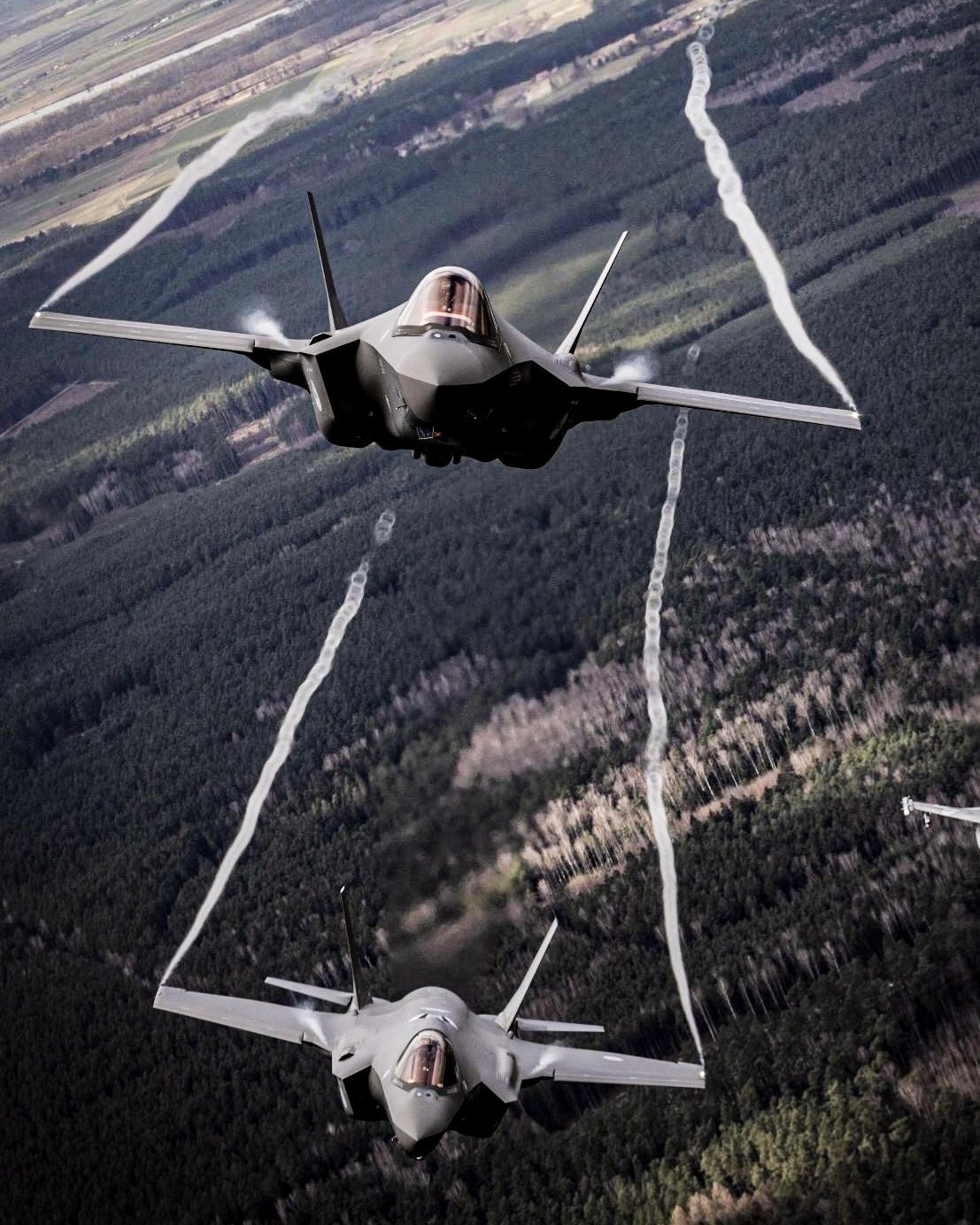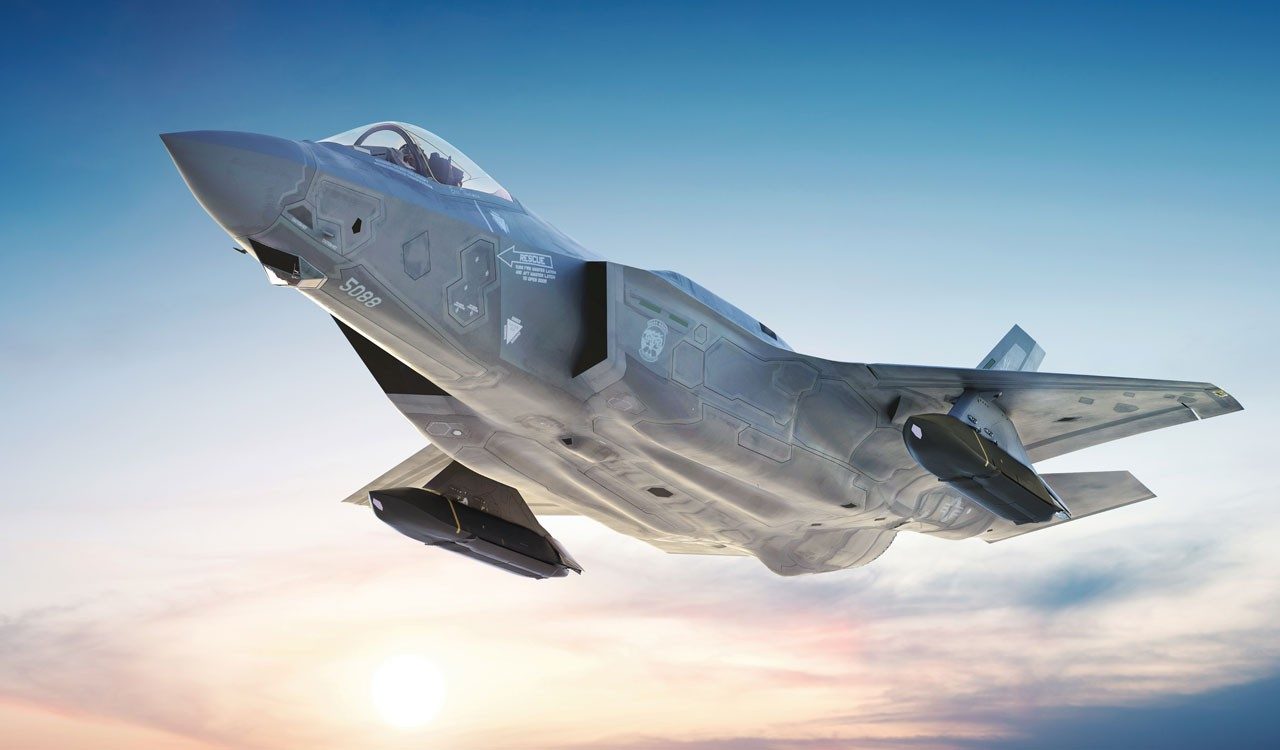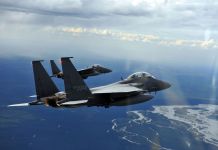The F-35A Lightning II aircraft is taking part in the yearly NATO nuclear tactical drills “Steadfast Noon” for the first time since it received certification as a nuclear-capable warplane.
NATO kicked off its annual nuclear tactical drills on October 14, involving over 60 aircraft and more than 2,000 personnel. The two-week exercise, which takes place over Western Europe, aims to evaluate NATO’s nuclear capabilities and involves nuclear-capable fighter jets equipped with American nuclear warheads. It does not involve live weapons.
The official release from NATO stated that about 2,000 military troops from eight different airbases are participating in Steadfast Noon, along with several aircraft types, such as bombers, fighter escorts, refueling planes, nuclear-capable jets, surveillance planes, and electronic warfare planes. The major flight paths for this year’s exercise are over Belgium, the Netherlands, Denmark, the United Kingdom, and the North Sea. The exercise is held in October every year.
The warplanes capable of carrying nuclear weapons participating in the drills include the Panavia Tornado, the Lockheed Martin F-16 Fighting Falcon, and the B-52 Stratofortress. Most importantly, this is the first time that the F-35 Lightning II aircraft will perform maneuvers after being deemed “ready to perform nuclear roles” by NATO.
Russ Goemaere, a spokesperson for the F-35 Joint Program Office, announced the aircraft’s nuclear certification on March 8. He stated that the certification was awarded in October 2023, ahead of the timeline promised to NATO allies.
https://twitter.com/NATO_ACT/status/1845090795130425528
Though the European countries participating in these drills do not possess nuclear weapons, NATO’s ‘Nuclear Sharing’ doctrine enables members without nukes to participate in NATO’s nuclear deployment. Belgium, Germany, Italy, and the Netherlands host US-based nukes for deterrence against Russia.
Notably, this year’s ‘Steadfast Noon’ drills are significant due to the increased tensions between NATO and Russia. Though Russia has been accused of engaging in nuclear saber-rattling since the initial days of the Ukraine invasion, the Russian President has adopted a more vicious and stern tone in recent times amid expanding Western aid for Ukraine.

In a speech to the UN Security Council on September 25, 2024, President Vladimir Putin forewarned the West that any aggression against Russia by a non-nuclear state, if backed by a nuclear power, would be seen as a “joint attack” on the nation. He said that nuclear retaliation would be considered “once we receive reliable information about a massive launch of air and space attack weapons and their crossing our state border. I mean strategic and tactical aircraft, cruise missiles, UAVs [unmanned aerial vehicles], hypersonic and other aircraft.”
Against that backdrop and amid prevailing nuclear threats, NATO has been honing its joint nuclear response for a potential emergency. Announcing the ‘Steadfast Noon-2024’, the new NATO chief, Mark Rutte, said: “Nuclear deterrence is the cornerstone of Allied security. Steadfast Noon is an important test of the Alliance’s nuclear deterrent and sends a clear message to any adversary that NATO will protect and defend all Allies.”
The statement from NATO reiterated that “the fundamental purpose of NATO’s nuclear capability is to preserve peace, prevent coercion and deter aggression.” It emphasized that “as long as nuclear weapons exist, NATO will remain a nuclear alliance.”
The nuclear threats from Russia make the participation of the cutting-edge F-35A Lightning II stealth aircraft all the more significant. In essence, what any other nuclear-capable aircraft can do, the F-35 can do with far lower chances of being detected due to its stealth capabilities.
Nuke-Capable F-35
The F-35A’s nuclear certification will allow it to operate in both conventional and nuclear combat scenarios, making it a “dual-capable” platform. Though primarily designed for air-to-air combat, the F-35A was developed with tactical nuclear strike capabilities.
The aircraft can carry the B61-12, an upgraded variant of the 1960-introduced B61 free-fall nuclear bomb. The B61-12 is an 825-pound, 12-foot-long bomb with an inertial navigation system (INS) guidance package. It has new parts (such as the precision guiding tail kit) and refurbished (all with varying yields) pieces from the previous B61 versions.
The F-35 Nuclear Certification effort culminated 10+ years of intense effort involving 16 diverse stakeholders from government and industry within the nuclear sector. The certification only covered F-35A conventional takeoff and landing aircraft and excludes other versions of the stealth fighter jet, like the F-35B with short take-off and vertical-landing capabilities or the carrier-based F35C.
The F-35’s advanced capabilities, including stealth technology and advanced sensors, make it a formidable addition to NATO’s deterrence forces.
While the Chinese J-20 and Russian Su-57 are considered capable stealth fighters, neither has received the authorization for nuclear operations – yet. The F-35 stands out as the dominant force in this arena, with its unique combination of stealth and nuclear strike capabilities setting it apart from its counterparts.
The Netherlands announced in November 2023 that it had received “initial certification for the deterrence mission” in November of last year, implying that some of the F-35A stealth aircraft in NATO’s fleet were getting close to being completely nuclear-capable.

In March 2024, the Dutch F-35s replaced F-16s in the NATO Quick Reaction Alert (QRA) detachment, marking the conclusion of an era in which the F-16 had served since 1981. Volkel Air Base is the home base for the Dual-Capable Aircraft F-35 squadron assigned to the nuclear role.
In May 2024, the Dutch government indicated that the Royal Netherlands Air Force (RNLAF) would fully transition from the F-16 Fighting Falcons to the advanced F-35 aircraft for NATO’s nuclear deterrence mission on June 1, 2024.
Now, the Dutch F-35A is finally prepared to soar through the skies as part of NATO’s key nuclear drills.
Eventually, other states that host US-origin nuclear weapons are expected to operate the F-35 as their nuclear-capable aircraft. For instance, the German Luftwaffe previously stated that obtaining nuclear certification for the Lockheed Martin F-35A Lightning II Joint Strike Fighter (JSF) was a key factor in purchasing the aircraft.
- Contact the author at sakshi.tiwari9555 (at) gmail.com
- Follow EurAsian Times on Google News




